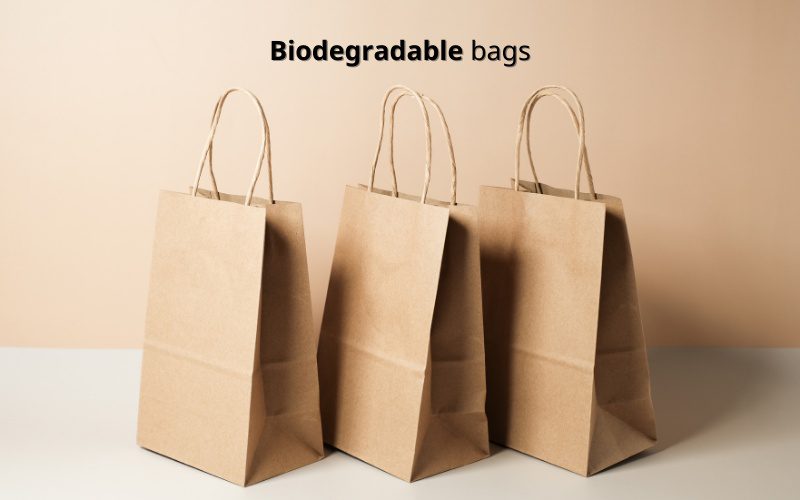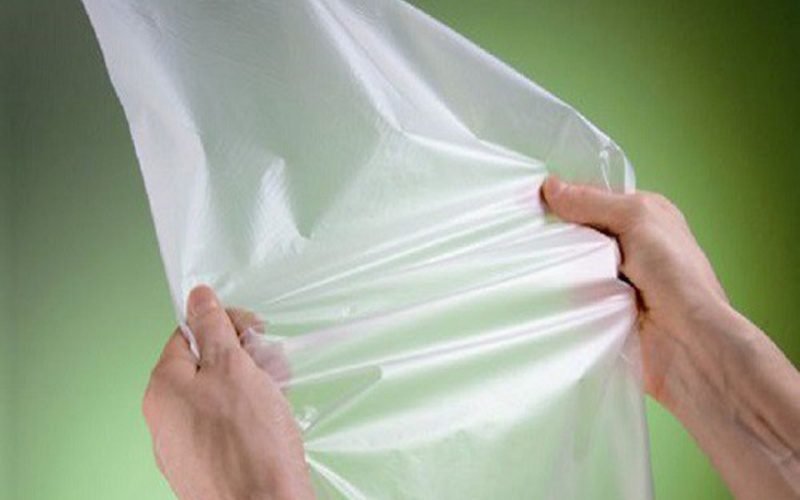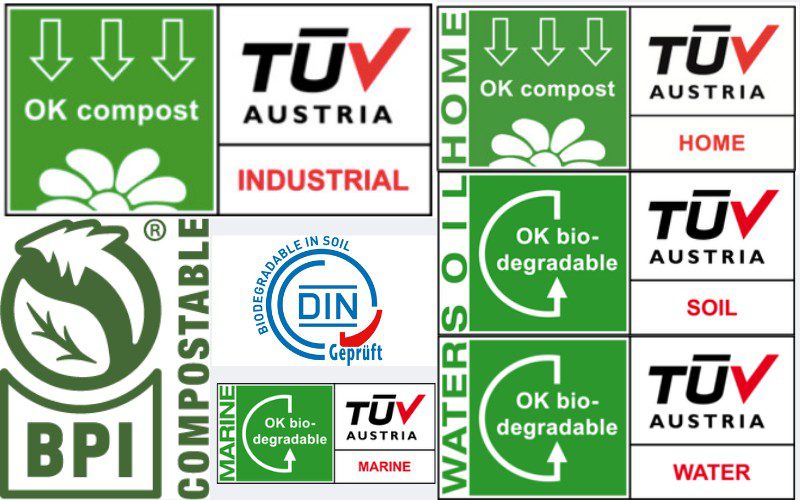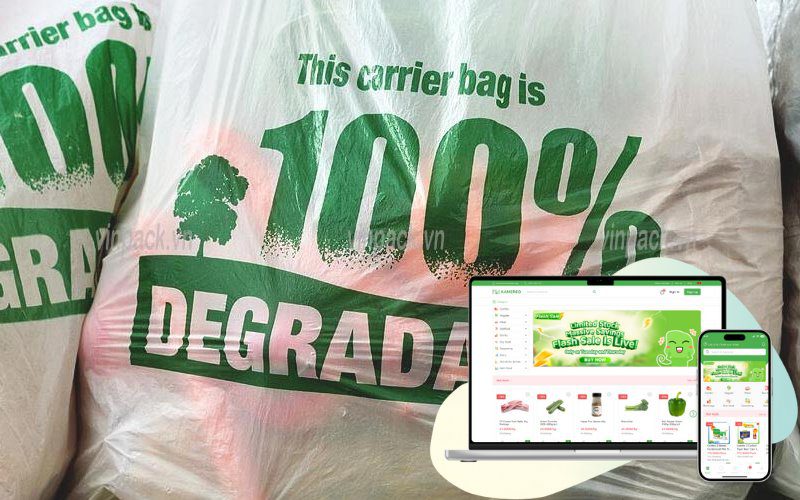In recent years, humanity has faced many environmental issues, particularly household waste. As a result, environmentally friendly products have emerged to partially address this problem. Today, let’s explore biodegradable bags with Kamereo in the following article!

What are biodegradable bags?
Biodegradable bags are items made from materials that can completely decompose in the natural environment by microorganisms. Therefore, these products do not cause environmental pollution like regular plastic bags.
Currently, there are two types of biodegradable bags available on the market:
- Fully biodegradable bags: Made from 100% natural materials (starch, cassava flour, corn flour, coconut fiber, bagasse, etc.), these bags can completely decompose into CO2, H2O, and microbial biomass under suitable environmental conditions (temperature, humidity, microorganisms, etc.).
- Conventional biodegradable bags: Made from traditional plastic combined with biodegradable additives. These bags can break down into smaller fragments in the environment. However, the decomposition rate is slower compared to fully biodegradable bags and may still cause environmental pollution if not handled properly.

Main materials of biodegradable bags
Depending on the purpose of use, manufacturers will choose appropriate materials to produce biodegradable bags. If biodegradable food bags are needed, high durability and good water resistance are essential. Meanwhile, cheaper materials can be used for garbage bags.
Natural origin materials
Starch is the most common material for producing bio-bags. This component can completely decompose into CO2 and H2O in the natural environment. Starch is usually extracted from crops such as:
- Cassava flour: A good material for producing bio-bags due to its high biodegradability and low cost.
- Corn flour: Has a similar structure to starch and can completely decompose in the natural environment.
- Coconut fiber: A material with high durability and good water resistance. Coconut fiber can be used to produce high-strength bio-bags suitable for applications requiring high load capacity.
- Bagasse: A byproduct of the sugar industry. Bagasse can be used to produce high-durability bio-bags with good biodegradability.

Synthetic materials
Besides natural materials, bio-bags are also made from synthetic materials. These bags are produced from organic compounds derived from petroleum but can completely decompose in the natural environment. Hence, degradable plastic bags differ from traditional plastic bags made from non-biodegradable polyethylene (PE) or polypropylene (PP).
Common synthetic materials used include:
- Polylactic Acid (PLA): A bioplastic made from corn or sugarcane starch.
- Polyhydroxyalkanoates (PHA): A bioplastic produced by microorganisms.
- Polybutylene Succinate (PBS): A bioplastic made from petroleum.
- Polycaprolactone (PCL): A bioplastic made from petroleum.
- Polybutylene Adipate Terephthalate (PBAT): A bioplastic made from petroleum.

Advantages and disadvantages of bio-bags
We all know that biodegradable bags significantly impact addressing environmental issues. However, these products also have some disadvantages that can affect their market acceptance.
Advantages
- Environmentally friendly: Bio-bags can completely decompose or break down into small fragments after a short period.
- Health safety: These products do not contain harmful chemicals, ensuring safety when used for food storage.
- Reusable: Some biodegradable bags are durable enough to be reused multiple times.
Disadvantages
- High cost: Biodegradable bags are more expensive than regular plastic bags due to the special raw materials and production process.
- External dependency: The decomposition rate depends on environmental conditions. Some biodegradable bags require composting or special conditions to fully decompose.

Tips for choosing suitable biodegradable bags
Currently, there are many types of biodegradable bags made from various materials with diverse prices and qualities available on the market. Choosing the right type for your needs and ensuring quality can be confusing. Here are some useful tips to help you choose the right biodegradable bags:
Identify your usage needs
You need to answer the question, “What do you need biodegradable bags for?” Is it for storing food, garbage, or other purposes? This helps you determine your usage needs and purchase suitable products.
Once you know your usage needs, you can easily choose the right size and thickness. For example, food bags need to be thicker than garbage bags. Also, if you need to carry heavy items, choose bags with high durability and good load capacity.

Use your senses
You can easily distinguish biodegradable bags using your senses:
- Touch: Biodegradable bags usually have a smooth, spongy surface, a thin film, and less vibrant colors.
- Smell: Most biodegradable bags contain starch. Therefore, you will notice a characteristic smell of this component when you sniff closely.
- Burn: Fully biodegradable bags burn easily without a strange smell, while others may shrivel and emit a burnt odor. This method is only applicable if you have already bought the product without thoroughly checking the previous two methods.

Check the material
To avoid buying products falsely labeled as biodegradable bags at high prices, carefully read the ingredient list before purchasing:
- Should buy: Prioritize bags made from natural materials (starch, cassava flour, corn flour, etc.) or bioplastics that can completely decompose (PLA, PBS, PBAT, etc.).
- Avoid: Bags that only state “biodegradable” without clear origin, materials, or contain PE, PP plastics.

Check for certifications on the packaging
Finally, you can identify biodegradable bags by checking if the packaging has one of the following certifications:
- TUV OK compost INDUSTRIAL: Products can biodegrade under industrial composting conditions.
- TUV OK compost HOME: Products can biodegrade under home composting conditions.
- Biodegradable Products Institute Compostable (BPI): Products can safely biodegrade under industrial composting conditions.
- DIN CERTCO compostable: Products can biodegrade under industrial conditions.
- TUV OK biodegradable SOIL: Products can biodegrade when buried in soil.
- TUV OK biodegradable WATER: Products can biodegrade in water.

Kamereo – A reliable place to buy biodegradable bags
If you are looking for a reputable place to buy bio-bags, consider Kamereo. We specialize in supplying materials for over 2000 restaurants, hotels, convenience stores, etc., in Ho Chi Minh City and Binh Duong.
In addition to branded biodegradable bags like EU Food, SSGLOVE, etc., Kamereo also produces many products under our own brand, offering diverse choices based on your needs.
Especially, customers who purchase with invoices over 400,000 VND receive free delivery. Monthly invoices over 20,000,000 VND qualify for a 1% cashback. Contact Kamereo via hotline 0812 46 37 27 for consultation and promotion details!
Read more: A brief introduction to the Kamereo brand

Conclusion
The above are basic information about biodegradable bags currently used on the market. These products offer an effective solution to address some environmental issues, especially plastic waste. Follow the Hot Products section for more useful information!
Read more:



